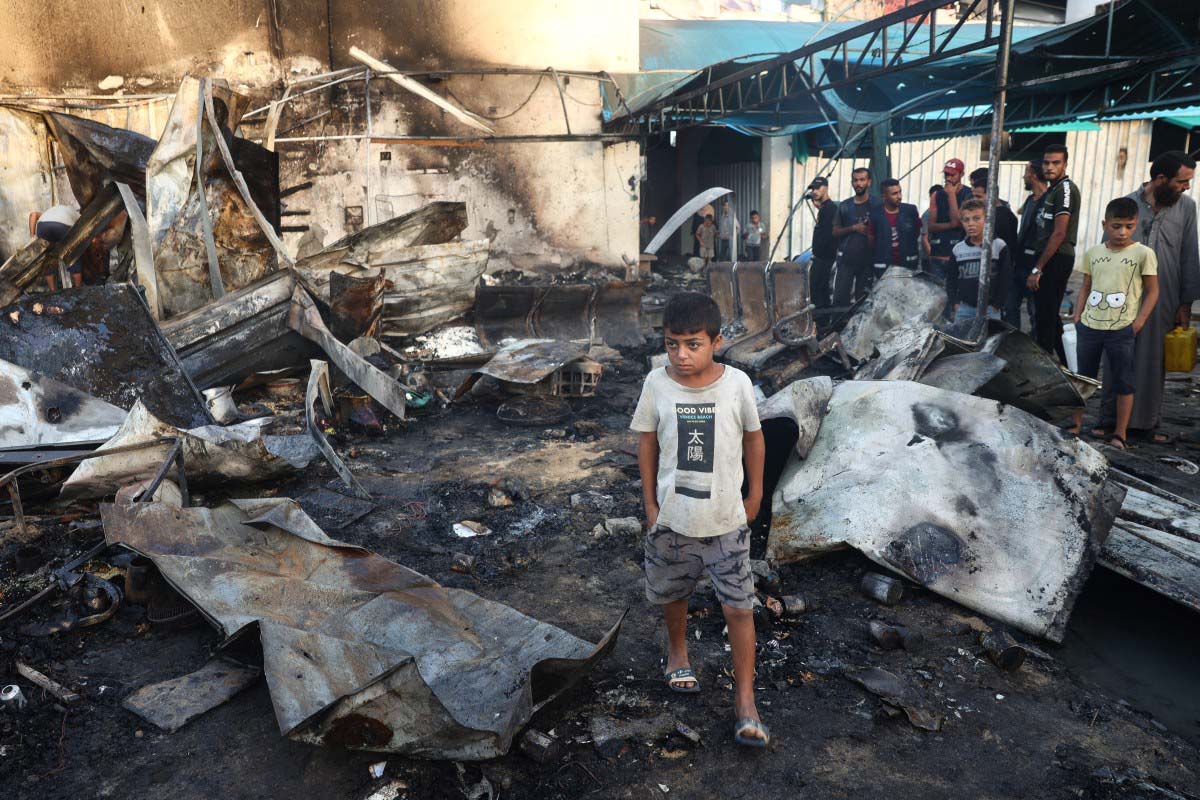
403
Sorry!!
Error! We're sorry, but the page you were
looking for doesn't exist.
Gaza remains in ruins
(MENAFN) More than 15 months after the Israeli occupation's devastating actions in Gaza, the region remains in ruins, with Palestinians describing the destruction as if the area had just experienced a massive earthquake. Buildings, infrastructure, and streets have been left in total devastation, with unprecedented damage to homes, water and sewage systems, and other vital infrastructure. The destruction, which has left Gaza in dire humanitarian conditions, was halted only by a ceasefire agreement that came into effect last Sunday, following mediation by the U.S., Egypt, and Qatar. According to the latest statistics from the government media office, the Israeli army dropped 100,000 tons of explosives on Gaza, resulting in the destruction of around 88% of the region's infrastructure, including homes, electricity networks, and the economy. The direct financial losses from the war have exceeded $38 billion.
The ceasefire agreement, which is scheduled to last 42 days, is expected to be followed by further phases of negotiation. The Israeli army is reported to have completely destroyed over 161,000 housing units, rendering tens of thousands uninhabitable, while also damaging government buildings, mosques, churches, schools, and heritage sites. Significant damage has also been done to the health sector, with hospitals, health centers, and medical facilities being targeted. For over a year, Gaza's water networks have been destroyed, with about 330,000 meters of water infrastructure rendered inoperable. Israel's blockade, which began early in the war, has led to severe water shortages, leaving many Palestinians with no access to safe water and causing health crises. Human Rights Watch has condemned these actions as deliberate attempts to deprive civilians of essential resources, amounting to genocide.
The destruction of Gaza's water supply has had a devastating impact, as underground wells and desalination plants were either destroyed or severely damaged, leaving the population with limited access to clean water. Meanwhile, the sewage system has been crippled, leading to hazardous conditions as wastewater has been released into populated areas. The destruction has caused massive displacement and created unsanitary and unsafe living conditions, with rainwater mixing with sewage and flooding public spaces. Despite the ceasefire, the region remains in a state of emergency, with Palestinians continuing to struggle for basic survival in the aftermath of the occupation’s aggression.
The ceasefire agreement, which is scheduled to last 42 days, is expected to be followed by further phases of negotiation. The Israeli army is reported to have completely destroyed over 161,000 housing units, rendering tens of thousands uninhabitable, while also damaging government buildings, mosques, churches, schools, and heritage sites. Significant damage has also been done to the health sector, with hospitals, health centers, and medical facilities being targeted. For over a year, Gaza's water networks have been destroyed, with about 330,000 meters of water infrastructure rendered inoperable. Israel's blockade, which began early in the war, has led to severe water shortages, leaving many Palestinians with no access to safe water and causing health crises. Human Rights Watch has condemned these actions as deliberate attempts to deprive civilians of essential resources, amounting to genocide.
The destruction of Gaza's water supply has had a devastating impact, as underground wells and desalination plants were either destroyed or severely damaged, leaving the population with limited access to clean water. Meanwhile, the sewage system has been crippled, leading to hazardous conditions as wastewater has been released into populated areas. The destruction has caused massive displacement and created unsanitary and unsafe living conditions, with rainwater mixing with sewage and flooding public spaces. Despite the ceasefire, the region remains in a state of emergency, with Palestinians continuing to struggle for basic survival in the aftermath of the occupation’s aggression.

Legal Disclaimer:
MENAFN provides the information “as is” without warranty of any kind. We do not accept any responsibility or liability for the accuracy, content, images, videos, licenses, completeness, legality, or reliability of the information contained in this article. If you have any complaints or copyright issues related to this article, kindly contact the provider above.






















Comments
No comment